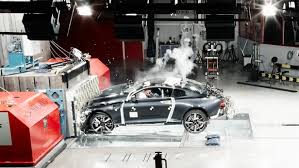
Breaking News
 Rule by Thieves: The Police State Becomes a Pay-to-Play Shadow Government
Rule by Thieves: The Police State Becomes a Pay-to-Play Shadow Government
 What Has Bitcoin Become 17 Years After Satoshi Nakamoto Published The Whitepaper?
What Has Bitcoin Become 17 Years After Satoshi Nakamoto Published The Whitepaper?
 These Are The World's Most Militarized Economies
These Are The World's Most Militarized Economies
Top Tech News
 Japan just injected artificial blood into a human. No blood type needed. No refrigeration.
Japan just injected artificial blood into a human. No blood type needed. No refrigeration.
 The 6 Best LLM Tools To Run Models Locally
The 6 Best LLM Tools To Run Models Locally
 Testing My First Sodium-Ion Solar Battery
Testing My First Sodium-Ion Solar Battery
 A man once paralyzed from the waist down now stands on his own, not with machines or wires,...
A man once paralyzed from the waist down now stands on his own, not with machines or wires,...
 Review: Thumb-sized thermal camera turns your phone into a smart tool
Review: Thumb-sized thermal camera turns your phone into a smart tool
 Army To Bring Nuclear Microreactors To Its Bases By 2028
Army To Bring Nuclear Microreactors To Its Bases By 2028
 Nissan Says It's On Track For Solid-State Batteries That Double EV Range By 2028
Nissan Says It's On Track For Solid-State Batteries That Double EV Range By 2028
 Carbon based computers that run on iron
Carbon based computers that run on iron
 Russia flies strategic cruise missile propelled by a nuclear engine
Russia flies strategic cruise missile propelled by a nuclear engine
 100% Free AC & Heat from SOLAR! Airspool Mini Split AC from Santan Solar | Unboxing & Install
100% Free AC & Heat from SOLAR! Airspool Mini Split AC from Santan Solar | Unboxing & Install
Polestar crumples its carbon-fiber car body in first ever crash tests

"We were really excited about this crash test," says Thomas Ingenlath, Chief Executive Officer at Polestar. "The first crash test of Polestar 1 has been about exploring the unknown. This was a crucial proof point in the development of Polestar 1. We had to know that the ideas and calculations that have gone into building this car were right, and they were."
Polestar shuttled the verification prototype head-on in to a stationary barrier at 56 km/h (35 mph) to replicate the impact of a front-on collision. Its engineers observed this impact closely to see where and how the car, with its carbon fiber body over an underlying steel structure, absorbed the energy. They seem to think it stood up pretty well, reporting the body showed no signs of misalignment after the crash.
"The outcome of this first crash test validates the decision to build the body of Polestar 1 in carbon fibre," says Polestar's Zef van der Putten. "It also confirms that carbon fibre supports the highest safety standards. This is an example of how Polestar spearheads the development of new technology in the Volvo Car Group."
The company began production of its first verification prototypes last month, with customer models of the Polestar 1 expected to hit the streets sometime in 2019. It will carry a price tag of US$155,000, €155,000 in Europe and 1.45 million RMB in China, but customers will also be able to get behind the wheel through catch-all subscription models that cover costs like insurance, maintenance and the lease.

 Known vs Unknown
Known vs Unknown

